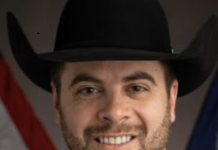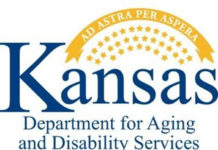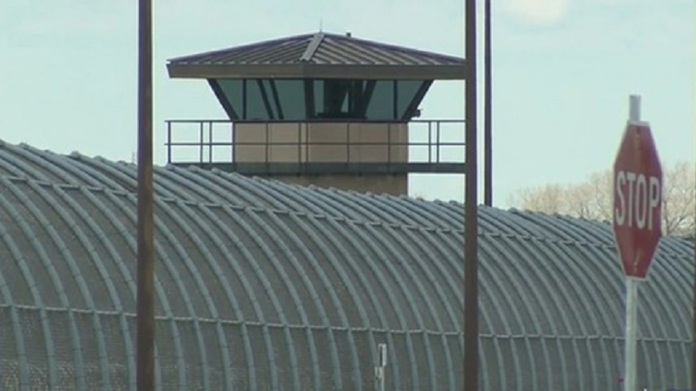Overtime in the Corrections Department is expected to shoot up 24% this fiscal year as the agency grapples with staffing shortages.
The department is projecting overtime expenses to climb to $16.3 million in the fiscal year ending this upcoming June 30, according data recently given to state lawmakers.
It’s about $3.2 million more than the roughly $13.1 million in overtime paid out in the last fiscal year and almost double the $8.3 million laid out the year before.
The year the pandemic started in 2020, overtime costs totaled $8.7 million.
With an average vacancy rate of 21% for uniformed positions across the adult corrections system, the agency reports that employees are logging as much as 80 hours a week in a physically and mentally demanding environment.

“We know that staffing is a national challenge,” Corrections Secretary Jeff Zmuda recently told lawmakers.
“Nearly every correctional system in the country is experiencing unprecedented difficulty both in recruiting new staff and in retaining staff,” he said.
Last year, Gov. Laura Kelly and lawmakers approved $18.3 million out of federal COVID-19 relief funds for a bump in pay for fiscal 2022 and another $33.9 million from the budget for fiscal 2023.
New adult and juvenile corrections officers are now eligible for a 2.5% base pay increase at three and nine months and a 5% increase in base pay at 12 months for a total of 10% after one year.
The pay plan provided $1.50-an-hour increase for employees at a correctional facility and another $2 an hour for uniformed officers and counselors plus another $2.50 an hour for employees at a prison with a staff vacancy rate of 25% or higher.
Overall, employees at the prisons in El Dorado, Lansing, Ellsworth, Norton, as well as the Kansas Juvenile Correctional Complex in Topeka qualified for a $6-an-hour pay differential under the pay plan, Zmuda said.
He credited the pay increase with holding down the number of staff vacancies even though they continue to persist.
Zmuda said that without the pay plan, staff vacancies for adult corrections workers were projected to reach 800 by November of this year.
When he addressed the committee at the end of last month, Zmuda said there were 386 vacancies for uniformed staff compared to the high-water mark of 475 in January 2021.
“What the pay plan has done is helped us to retain our current staff,” he said.
“What it’s not done is help us recruit others to come in,” he said. “We’re struggling to bring new people into the organization.”
State data shows that the most overall vacancies are at El Dorado with 108 followed by Lansing at 101, Hutchinson at 73, Norton at 58 and Ellsworth at 52.
Zmuda said the agency is facing the challenge of attracting new employees from existing jobs given that there are so few people looking for work currently.
For instance, there are very few people receiving unemployment benefits in the counties with the four adult prisons where the vacancy rates are the highest, he said.
For instance, in Ellsworth County there were two people receiving unemployment benefits the week of Nov. 6 through Nov. 12. The prison had 52 vacancies.
In Norton County, there was one person receiving unemployment benefits while the prison had 58 vacancies.
In Leavenworth County, there were 57 people getting unemployment benefits while there were 101 vacancies at Lansing.
“We’re having to draw people from a job they’re already in,” Zmuda said. “It’s a little bit tougher.”
Zmuda said the agency has undertaken a number of initiatives to attract employees, including advertising on radio and television, attending job fairs, promoting jobs on social media and streamlining the application process.
He said the agency has increased its budget 200% for advertising and recruiting.
He noted that the problem is not unique to Kansas. Consider:
- In West Virginia, staffing has declined 36% since August 2020, resulting in a state of emergency in prisons and regional jails.
- In Minnesota, the state has offered $10,000 bonuses to recruit officers to work at three of its prisons where there is an officer shortage.
- In North Carolina, about 34% of the state’s current budgeted corrections officers positions are vacant, up from about 20% three years ago.
- Michigan has reported 800 corrections vacancies, which led the state to consider hiring retired officers to solve the problem.
The corrections system has a capacity of 10,364 beds, but only is able to staff 8,782.
The prison population is about 8,400, although it’s starting to creep back up.
A recent report issued by the Kansas Sentencing Commission estimated that the prison population would increase to about 8,700 in fiscal year 2023 and ultimately to 9,353 in fiscal year 2032.
“Obviously, they’re short staffed,” said Republican state Rep. Troy Waymaster, chair of the House Appropriations Committee who also recently led a legislative panel examining state employee compensation.
“The staff that is currently working are covering 16-hour shifts a day just trying to cover the shortages that are there,” he said.
“It’s posing a big a problem,” he said.
Waymaster said pay increases should probably be tailored to specific corrections facilities.
He said recruitment efforts might need to vary from facility to facility.
“We need to stop looking at increases across the board,” he said.
“Each institution, especially in the correctional facilities and in the state hospitals, is different in how they’re trying to attract employees,” he said.
For instance, he noted that the facility in Norton may have to compete with Nebraska for workers.
Nebraska is now paying $28 an hour in starting pay compared to Kansas, which has a starting pay of $18.26 an hour.
“It might be advantageous to go ahead and work in Nebraska where you’re making $10 more an hour,” Waymaster said.
“That facility is going to have different needs that we need to address than El Dorado or Lansing or Ellsworth,” he said.
“Each area is going to have a different environment in trying to attract individuals to work there,” he said.















